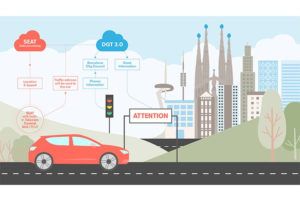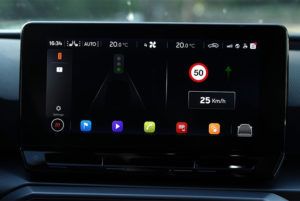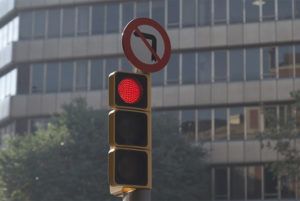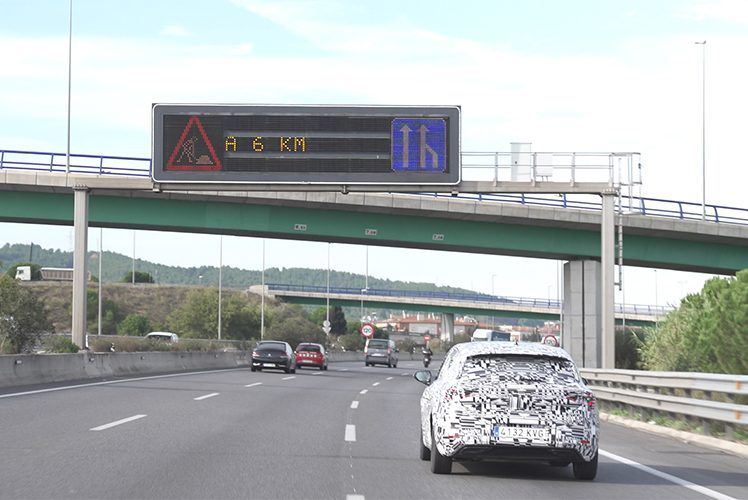A project led by Spanish automaker SEAT, in collaboration with the Spanish Traffic Authority (DGT), the Barcelona City Council, and traffic equipment supplier Grupo Etra has successfully demonstrated cellular Vehicle-to-Everything (C-V2X) technology to connect cars with real-time traffic information.
The multifunctional system supplies vehicles with real-time information from the Traffic Authority’s cloud-based DGT 3.0 platform using cellular technology with latency times of 300 milliseconds. The C-V2X system’s current services include:
Using data from Etra’s controller cabinets, drivers receive an advance alert on the status of upcoming traffic lights so they can adapt their speed accordingly. When a connected vehicle is approaching a traffic light, the system performs a calculation based on how far away the car is and the speed it is travelling at, and an alert appears on the in-car screen showing whether it will be red, green or yellow when it arrives. To improve road safety, the system only works if the vehicle is not exceeding the posted speed limit.
The system connects to the DGT’s 2,000 roadside variable message signs (VMS) that use data from traffic control centres to provide drivers with traffic and weather conditions or information about road work or accidents. All of this information is displayed directly on the screens of connected vehicles at any point of the road network.
As the project advances, the connected cars and users themselves will also become information suppliers for the overall system, providing real-time data on conditions and events.
“In this project, our new connected cars receive real-time traffic information from the Traffic Authority’s central cloud, including information displayed on motorway panels or the traffic light status in cities,” said Jordi Caus, the head of urban mobility concepts at SEAT. “The traffic light sends a signal to the Traffic Authority’s cloud about its current status and when it is going to change. The car receives this information, interprets it and alerts the driver of its upcoming status depending on driving speed. This is useful if it is about to change to red, as drivers can begin to decelerate before reaching the traffic light. With this project we’re taking a first step to connect cars with overall traffic infrastructure. We’ve begun with information functions, but with the future autonomous vehicle in mind we’ll be able to act directly on the car in situations of risk.” 
Jorge Ordás, deputy director of mobility and technology at the DGT, said, “We are aiming for a significant reduction in the number of accidents, less vehicle traffic and therefore, a positive effect on the environment. We can accomplish the same as what we used to do with variable message signs on the motorway, but now directly to the car from any point on the road. Anyone with information about what happens on the road can share it, so other users will know in advance of any incident when they reach the same point.”
The head of mobility and infrastructures at Barcelona City Council, Manuel Valdés, said, “The system does not work at higher speeds, which is very important for road safety. It aims to be an auxiliary tool that enables motorists to drive more smoothly.” 





